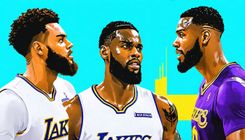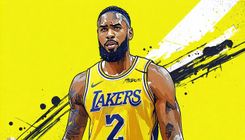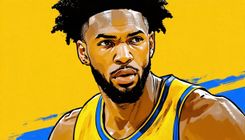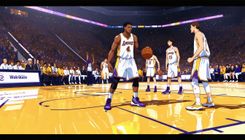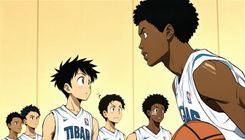Analyzing the Upcoming NBA Trade Landscape for the 2024-25 Season

The 2024-25 NBA season is shaping up to be particularly interesting regarding trade possibilities. With the full implementation of the new Collective Bargaining Agreement (CBA) featuring stringent restrictions, such as the inability for teams exceeding the second apron to aggregate outgoing salaries, the trade discussions are becoming increasingly complex. Additionally, several prominent players, many of whom have experience in All-Star games, may be on the table. The current parity within the league makes it feasible for teams to consider themselves potential buyers. However, at this point in time, the number of high-impact players available who could significantly elevate a team's status from competitive to championship-caliber appears limited. Notably, some of the more recognized names circulating in trade rumors may not yield the valuable returns their prices imply. This analysis will explore which players may be overrated as trade targets heading into 2025, influenced largely by subjective evaluations and current buzz surrounding them.
One of the most intriguing cases in this trade market is Zach LaVine of the Chicago Bulls. Following reports last offseason suggested the Bulls were eager to offload LaVine, including the possibility of attaching a first-round pick to facilitate a deal, many have questioned his value. While LaVine possesses undeniable talent, he may have reached his performance ceiling, and the hefty contract he carries—$46 million for the upcoming season with a $49 million player option for 2026-27—raises concerns. The Denver Nuggets were rumored to be interested in trading Michael Porter Jr. for LaVine, sparking debate about the merit of such a trade. In isolation, one might argue that LaVine is the superior player, but the perceived gap in talent is narrow. For a team already featuring key ball-handlers such as Nikola Jokić, Jamal Murray, and Russell Westbrook, LaVine's scoring and creation abilities might not outweigh MPJ's versatility in shooting, rebounding, and size. Therefore, the marginal benefit of acquiring LaVine could fail to justify parting with Porter and depleting Denver's limited draft resources.
Similarly, Jonathan Kuminga, the 6'8'' forward for the Golden State Warriors, is generating considerable trade speculation. Given the Warriors' struggles this season, Kuminga emerges as their most movable and valuable asset, aside from future draft picks. However, he is set to become a restricted free agent this summer, and if his reported demand for an average annual salary of $35 million holds true, that could deter teams from offering significant trade value. With a career three-point shooting percentage of 34.2 and relatively low rates in assists, steals, and blocks, Kuminga's overall contribution needs a closer examination. His box plus/minus this season suggests moderate improvement, marking his first season above average in this metric. Comparisons with players who boast similar statistical profiles yield a mixed outlook: while names like Josh Hart and Klay Thompson evoke positive associations, others like Mickaël Piétrus and Tracy Murray fall flat.
Brandon Ingram, who shares some attributes with both LaVine and Kuminga, also enters the conversation as a potentially overrated target. Like LaVine, Ingram may have reached a performance plateau and typically requires the ball in his hands to flourish. He is also facing free agency soon, having set expectations for a deal around $50 million per season despite not consistently demonstrating that level of value during his career. Ingram's injury history complicates matters, and while his recent averages of 21.1 points, 5.6 assists, 5.2 rebounds, and 1.6 threes per game seem appealing, his track record as a below-average shooter and his underwhelming defensive impact raise red flags. Acquiring Ingram without sacrificing long-term assets might make sense for some teams, but parting with a draft pick or young talent for a player whose skill set leans towards being a short-term solution may not be advisable.
The case of Bradley Beal adds further complexity to the trade narrative. With a no-trade clause in place, Beal's situation largely hinges on his willingness to modify his stance. Even if he were to indicate openness to a trade, his value in such a deal remains questionable given his age, 31, and a growing injury history. Although playing alongside superstars Devin Booker and Kevin Durant has impacted his production, Beal's declining box plus/minus indicates deeper issues. While he can still serve as a credible floor spacer, any acquiring team would likely face challenges in persuading him to reduce his mid-range attempts and focus more on defensive responsibilities. This scenario presents potential complications for any team willing to commit over $50 million per season to Beal through 2026-27, when he possesses a player option worth $57.1 million.
In a twist, Jimmy Butler of the Miami Heat recently emerged as a trade topic as he appears focused on a specific destination: the Phoenix Suns. Following the saga of Damian Lillard's aspirations to join the Heat, Butler is now reportedly indicating a desire to play in Phoenix. Though the Suns might consider extending a lucrative contract after trading for Butler, their recent decisions have left them financially precarious, locked into three exorbitant contracts while remaining below .500. Trading the remainder of their assets—including Beal, given Phoenix's situation with the second apron—and a distant 2031 first-round pick could perpetuate their status as an aging, injury-prone team instead of advancing their goals for a championship. While Butler may fit well in other environments, his history of discomfort on teams he does not wish to join will be a factor for any new franchise. The complexities surrounding Butler’s potential free agency (with a player option for the 2025-26 season), along with his age—he will turn 36 before next season—and history of injuries make any substantial investment in a trade fraught with risk.



